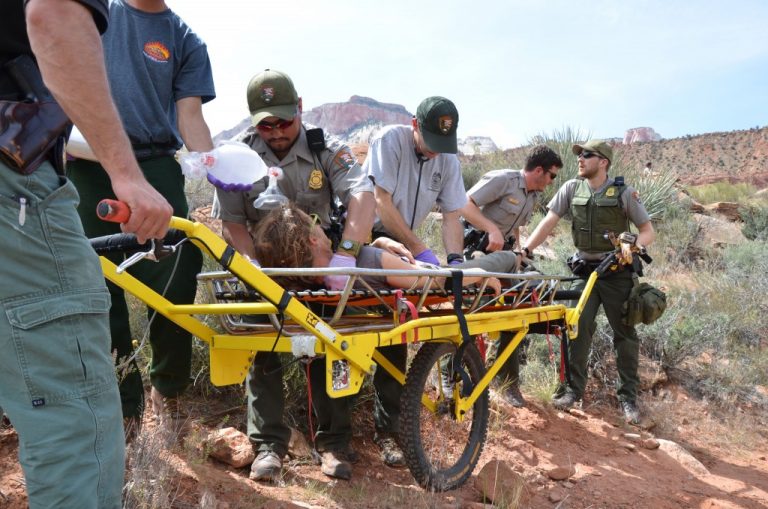It’s no walk in the park
Angel’s Landing is one of Zion National Park’s most noted and popular destinations. The 1,488-foot feature winds through a path of constantly rising slick rock and exposed cliffs. The sights are unlike any other in the world.
But the hike is also one of the most dangerous in the world.
Even when conditions are perfect, the trail involves an incredible amount of coordination, and the last half-mile of the trek is known for the chains that run parallel to the trail for assisting hikers over dangerous ridges in the orange sandstone.
Tragically, falls are not uncommon in National Parks. Earlier this year a 35-year-old Salt Lake City man was found dead at the bottom of Angel’s Landing. Not long afterward, a 68-year-old German tourist was found below Refrigerator Canyon. His injuries were consistent with a fall. A 13-year-old girl fell in February 2018. In 2017, Tate Ryan Volino, 45, fell to his death. In April of 2010, three hikers fell to their deaths from Angel’s Landing.
Deaths and injuries spark discussions about the safety of the park
Hosting about 4,500,000 visitors per year, it’s easy to forget that Zion National Park is a wilderness area that regularly poses threats.
In February, a helicopter crew rescued Ryan Osmun, 34, who was trapped in quicksand in the Subway—a semi-technical slot canyon where the streambed is the trail. Quicksand isn’t a particularly common risk in the park, but when conditions are right, it’s possible to get stuck in the sand. While human buoyancy prevents people from drowning in the quicksand, it is possible to lose circulation to the legs or succumb to other threats such as hypothermia. Rescuers said Osmun was lucky to be alive.
According to a 2017 article appearing in Outside Magazine, officials don’t track National Park deaths, but writer Jeffrey Olson notes that “the number one cause of death is drowning, followed by motor vehicle crashes and slips or falls.” The article also says that over the last decade there have been 1,000 non-suicide related deaths within the national park system.
Along with traditional wilderness risks, Zion also sees a substantial amount of flash-flooding due to the type of soil prominent in the area.
In March, the Virgin River flashed from 100 cubic feet per second to a stunning 7,000 feet per second. Flash flooding is unpredictable and poses a threat any time the boundary waters see excessive rain or snowmelt.
Compared to regions of the country where the soil soaks up water, Zion’s rocky terrain is prone to flash flooding because water takes the path of least resistance—over the rock and downward into the canyons. Because Zion is a huge array of slot-canyons, the park can quickly become a dangerous place.
But the risks don’t end in Zion.
In January, a man died of a cardiac arrest while visiting Arches National Park, and a 13-year-old boy fell to his death while visiting Snow Canyon State Park. There’s speculation that he was attempting to “free solo” when a descent gone wrong cost him his life.
While these events weigh heavy on the mind, drawing attention to them provides an opportunity to prevent future tragedies: what went wrong? What could have been done differently? How do we keep ourselves safe while visiting Utah’s parks and public lands?
Local rangers and outfitters often display a weather report with expected conditions and provide insight into the difficulty of local hikes.
With tourism season upon us, it’s important to educate ourselves on local weather trends, carry plenty of water, and be wary of the risks associated with wilderness exploration—even in a national park.
Another way in which you can prepare yourself for a safe jaunt into unpredictable nature is to read trip reports, trail guides, and the accounts of others who have been there before you—you can do that HERE.
Happy hiking, and be safe.







